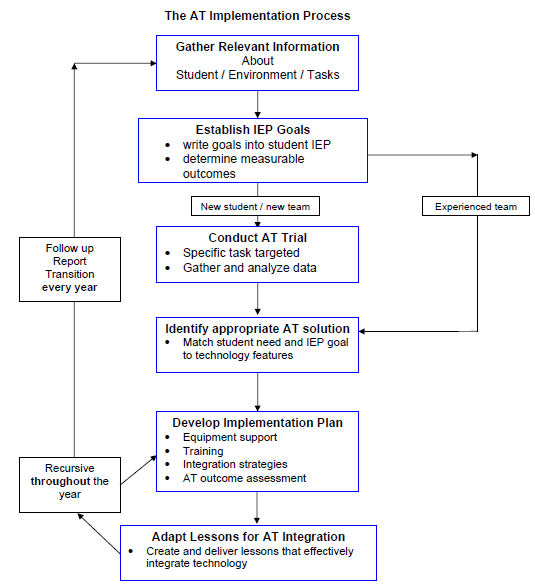
Step 1: Gather Relevant Information
- Hold an initial team meeting to determine what data you will be collecting
- Data collected should show a baseline of student performance without the assistive technology
- Collect as much information as possible using checklists, work samples, observations, interviews, formal assessments etc.
Step 2: Establish IEP Goals
- Based on the data collected, identify priority areas for the student. Use these areas to form both long-term and short-term goals for the student
- The iPad should not be a goal for the student, but instead a resource used to assist the student in reaching these objectives
Step 3: Conduct Assistive Technology Trials
- Conduct trials with 2-3 different AT solutions (if possible) and collect as much data as possible
- Important step because there is a large spectrum of AT solutions
- Remember this is a process, trial and error takes time, for the best results
Step 4: Identify AT Solutions
- After the trials of AT solutions have finished, if an AT solution is successful, select the AT suitable for the student’s use.
Step 5: Develop AT Implementation Plan
- With team, designate who is going to responsible for what with the AT
- Areas for consideration: training, management, security, plan for use in the classroom, assessment, and more
Step 6: Adapt Lessons for AT Integration
- Key to this step is to have the involvement of the classroom teacher; figure out who is going to do what between the teacher and the paraprofessionals
- Determine learning goals and pedagogical decisions to determine parameters of learning activity
- Select appropriate activity types and assessment strategies
Step 7: Follow Up and Plan Transition
- Imperative to regularly evaluate the use of the AT and reassess it
- Current team must plan for future changes such as transitions, classrooms, teachers, etc.
